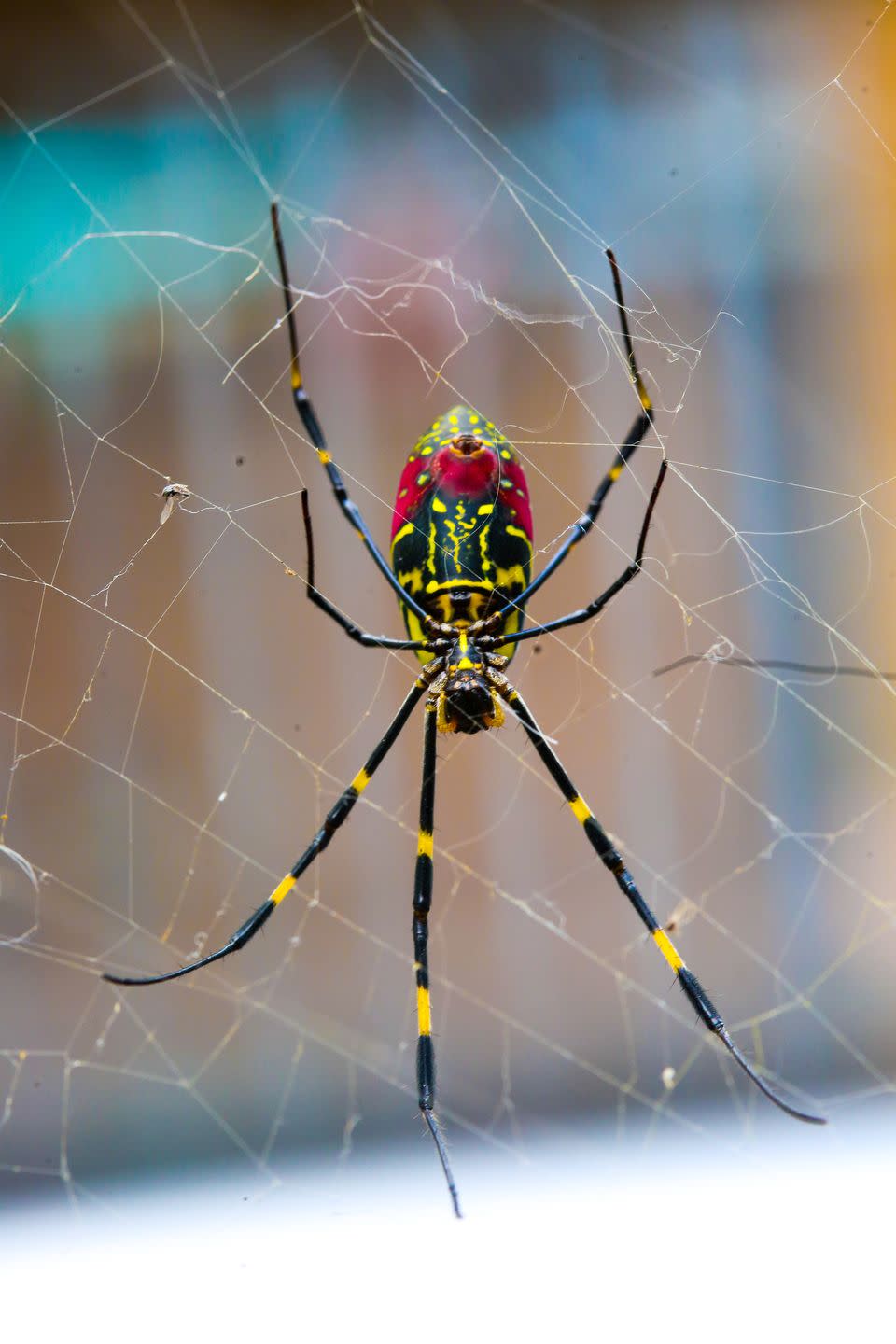New Research Says Palm-Sized Joro Spiders Are Expected to Invade the East Coast in Coming Years

A new study from the University of Georgia suggests Joro spiders will invade the United States’ Eastern Seaboard in coming years.
The spiders first arrived in Georgia in 2013 and have since been spotted all over the state and in the Carolinas.
The study found that their resistance to cold temperatures and ability to ride winds via web “ballooning” allow them to easily spread and multiply.
Over the last few years, Georgia residents have not-so-enthusiastically welcomed a new visitor—the Japan-native Joro spider. And much to locals’ chagrin, a new study from the University of Georgia published in Physiological Entomology suggests that the eight-legged intruders won’t go away any time soon. In fact, their population will likely spread across the Eastern United States.
What is a Joro Spider and what does one look like?
Scientifically known as Trichonephila clavata, Joro spiders are large (sometimes palm-sized) arachnids that are specifically known for their yellow, red, and blackish blue stripe-like markings. A close relative to the Golden Silk spider, per UGA, they spin intricate, golden-hued webs that allow them to “balloon” and ride winds for up to 100 miles—which is why they can spread so widely, so fast.
The Physiological Entomology study found that the Joro’s resilience to cold temperatures also contributed to its growing American population. In comparison to its cousins (including the Golden Silk spider), it had a 77% higher heart rate and a higher metabolism, allowing it to survive brief freezes that its relatives could not. These attributes, the study found, will allow Joros to easily travel up and down the Eastern Seaboard.

Where did the Joro spider come from?
Though a native of Japan, researchers say that humans also play a role in the Joro invasion. They first arrived in Georgia in 2013, presumably on a shipping container, and have since migrated into the Carolinas. “The potential for these spiders to be spread through people’s movements is very high,” Benjamin Frick, co-author of the study and an undergraduate researcher in UGA’s Odum School of Ecology said in a statement. He added that a UGA graduate student had recently “accidentally” transported one to Oklahoma.
Are Joro spiders poisonous?
Experts say Joro spiders are essentially harmless to humans and pets. Although they can bite, they won’t unless cornered, and it would only cause concern if an allergy to Joros is present. Otherwise, the spiders reportedly don’t pose a threat to local food webs or ecosystems, per UGA, and could even serve as food to local predators such as birds.
The Joros could also act as pest control, according to USA Today, as they feed on household insects such as mosquitos, flies, and stink bugs—a reason residents may actually want to keep them around.
What to do if you spot a Joro spider
In short: leave them be, which is easier said than done—especially when their webs are draped over your porch railings, mailbox, or power lines. “People should try to learn to live with them,” Andy Davis, study co-author and research scientist in UGA’s School of Ecology said in a statement. “If they’re literally in your way, I can see taking a web down and moving them to the side, but they’re just going to be back next year.”
“The way I see it, there’s no point in excess cruelty where it’s not needed,” Frick added. “You have people with saltwater guns shooting them out of the trees and things like that, and that’s really just unnecessary.”
After all, it’s thanks to humans that the Joros made it stateside to begin with. “There’s really no reason to go around actively squishing them,” Frick said. “Humans are at the root of their invasion. Don’t blame the Joro spider.”
You Might Also Like

 Yahoo Movies
Yahoo Movies 
